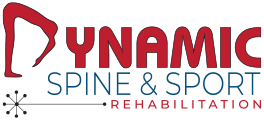Concussions (mTBI) are caused by blows to the head that cause the brain to smash against the skull. These injuries can significantly influence an individual’s cognitive and physical capacities, negatively impacting their performance in various activities. A comprehensive approach that incorporates cutting-edge technology and mindful habits is required to balance performance and concussion prevention.
Table of Contents
ToggleWhy is Concussion a Major Issue in Sports?
Because of the frequency of collisions and contact in sports, concussion is a major problem. It is concealed, affecting the brain and producing cognitive difficulties. Repeated concussions can result in serious disorders that damage long-term brain health. Athletes frequently return to play too soon, risking further injury. Lawsuits and increased awareness have emphasized the need for improved safety procedures, particularly in young sports. Concussion prevention necessitates regulation modifications, improved equipment, education, and an emphasis on player well-being.
Performance and Prevention in Peccole Ranch, Spring Valley, N Lamb Blvd, S Rancho Dr, Las Vegas, NV
Performance and Prevention in Henderson, NV
The Interplay between Performance and Concussion Risk
Finding a balance between pushing physical limits to improve performance and reducing the danger of concussions is difficult. Prioritizing safety does not have to mean sacrificing performance; in fact, it can lead to more sustainable success. Athletes and enthusiasts can improve their performance while minimizing their risk of injury by using evidence-based tactics.
Strategies for Enhancing Performance
- Holistic training approaches. A well-rounded training plan that includes strength, flexibility, and cardiovascular workouts will help improve overall performance.
- Optimal nutrition and hydration. It is critical for peak performance to fuel the body with a sufficient diet and to stay hydrated. Adequate food intake promotes cognitive function and physical endurance.
- Strategic mental conditioning. Developing mental toughness, attention, and positive self-talk can dramatically improve an individual’s performance.
- Proper rest and recovery. Prioritizing quality sleep and allowing the body enough time to recuperate can help reduce burnout and improve performance.
- Skill refinement. Consistent practice and skill growth in certain activities results in better execution, which reduces the likelihood of accidents.

How to Prevent Concussions?
To prevent concussions, especially in sports, you can use:
- Protective gear and equipment. Protective equipment like helmets and padding minimizes the impact force on the head, lowering the risk of concussions.
- Mastery of techniques. Learning and adopting proper sports and physical skills can help reduce the likelihood of harmful encounters.
- Regular health assessments. Regular medical exams can reveal any underlying issues that may make a person more prone to concussions.
- Awareness and education. Raising knowledge of concussions and their possible repercussions motivates people to put their safety first.
- Warm-up and cool-down rituals. Warm-up practices prepare the body for exertion, whereas cool-down activities aid in recovery and reduce the chance of injury.
Concussion Prevention Equipment
Concussion prevention gear consists of various items meant to lower the risk of head injuries in various activities. While no equipment can guarantee total prevention, the following measures can help reduce the impact and risk of concussions:
- Helmets. Helmets, designed for certain sports, absorb and spread impact forces, protecting the head from direct strikes and lowering the risk of brain injuries, including concussions.
- Headgear. In addition to helmets, some sports use customized headgear that provides extra cushioning and protection around the head and temples.
- Mouthguards. While designed primarily for oral safety, mouthguards may provide indirect protection by lowering jaw impact forces that may lead to concussions.
- Protective eyewear. Goggles or face masks protect the eyes and face from injury, which can help avoid concussions indirectly by lowering the risk of head collisions.
- Collar devices. Some developing devices are designed to stabilize the neck and prevent head movement, potentially lowering the risk of concussions.
- Impact sensors. Wearable sensors detect head impacts, providing data that can be used to identify dangerous situations and improve athlete awareness.
- Safety padding. Padding on sports equipment, playing surfaces, and obstacles can help cushion impacts and reduce injury severity.
- Neck strength training. Neck muscle strengthening can aid in stabilizing the head and minimize the forces delivered to the brain during impacts.
- Proper footwear. Appropriate footwear can improve balance and stability, lowering the risk of falls that result in head injuries.
- Regulations and rules. Enforcing and adjusting rules that discourage risky plays or approaches can aid in the prevention of head injuries.
Do Helmets Prevent Concussions?
Helmets absorb and distribute impact forces to lessen the risk of head injuries, including concussions. They act as a protective barrier, decreasing the severity of potential injuries by mitigating the direct impact of hits to the head. While helmets are useful in reducing some types of head trauma, they may not eliminate the risk of concussions, particularly in high-impact sports or scenarios involving rotating forces. While helmets are an important safety precaution, other measures and the right practices are equally important in full concussion prevention strategies.
Do Mouthguards Prevent Concussions?
Mouth guards primarily protect the teeth and mouth. However, there is little evidence that they prevent concussions. They primarily concern dental safety, whereas concussion prevention entails procedures, helmets, and safety precautions.
Concussion Prevention Technology
Advanced helmets, impact sensors, virtual reality training, neck-strengthening devices, and smart mouth guards are all examples of concussion preventive technologies. These advancements, together with regulation revisions and education, attempt to lessen the danger of head injuries, including concussions.
How Can You Prevent Concussions at Work?
To prevent concussions at work:
- Training. Employees should be educated on concussion risks, symptoms, and safe measures.
- Safety measures. Implement protocols, proper signage, and PPE (helmets, goggles) where necessary.
- Workplace design. Maintain clean routes, enough illumination, and non-slip surfaces.
- Breaks and fatigue. To avoid weariness, encourage regular breaks and regulate schedules.
- Fall prevention. Install railings, guardrails, and safety harnesses for elevated tasks to prevent falls.
- Reporting. Make it simple to report incidents and look for ways to improve.
- Supervision. Supervisors should be assigned to oversee safety compliance.
- Continuous improvement. Update protocols regularly based on feedback and advancements.
Concussion Prevention Near Me in Las Vegas
Welcome to Dynamic Spine & Sport, your trusted partner in health and performance in Las Vegas. Our committed staff provides specialized concussion performance and prevention services to protect your health. Whether you’re an athlete looking for preventative measures or someone recuperating from a concussion, we’re here to help. Make your health journey a priority with us today.
- Published by Joseph E Indrieri
- May 31, 2023
- No Comments

